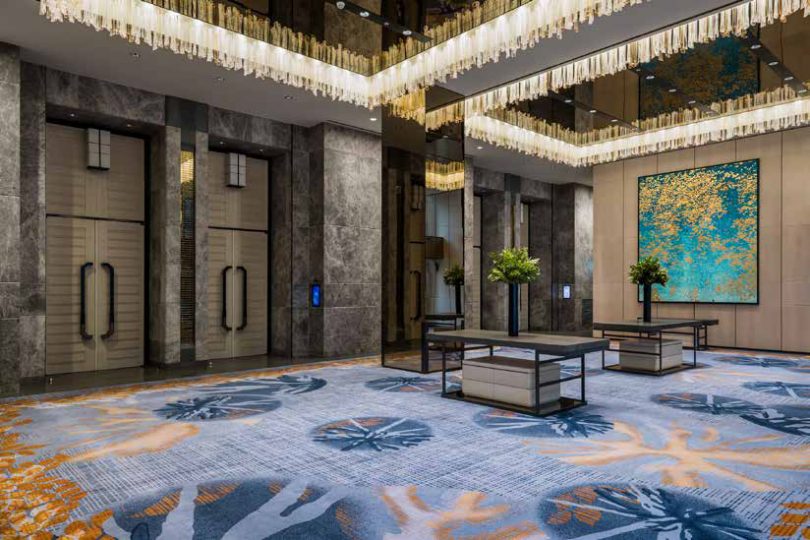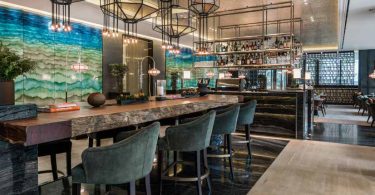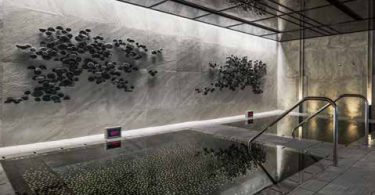Four Seasons Hotels pride themselves as being one of the top hotel brands in the world. From the aesthetics, comfort and functionality to the level of service, the brand focuses on achieving a bespoke outcome that is distinctive for the modern traveller. The Four Seasons brand is known around the world for offering unrivalled international hospitality experiences that reflect a sense of local belonging. The design team at LTW was tasked to create a concept for the Four Seasons Seoul that was to be the best of both worlds: uncompromisingly international in its scope, outlook and amenities, yet a proud representation of the rich cultural heritage of the site.
SITE LOCATION
The hotel is located in the Gwanghwamun district in Seoul, where early excavations had unearthed a historic street buried underneath for at least 500 years. This fortuitous archaeological discovery became the overarching theme of the overall hotel design, which highlights the sense of place. The design team studied the site’s location—in the heart of the bustling financial and commercial district that drives this metropolis—in great detail and included elements of Korean architecture, artistry and craftsmanship into the interior scheme.
Korean architecture is always conscious of the delicate relationship between a place and its environment, and strives for a harmonious interplay between the two. Mindful of this heritage, LTW combined traditional building elements with inspiration drawn from nature: gemstone colour palettes; wallpapers and silk screens that feature silhouettes of tree branches; as well as lighting fixtures that comprise thousands of delicate transparent glass tubes, like icicles suspended from the leaves.
TRADITIONAL AND MODERN ELEMENTS
The materials used for the rooms and public spaces—solid timber beams, lacquered wood frames and silk screens—pay homage to the original ancient buildings that had gone before it. Every space of the hotel was carefully crafted, with each one of them telling a different story. The separate storylines altogether present a blend of modernity and heritage.
Taking the essence and reinterpreting elements of the Hanok (traditional Korean house), the lobby’s design conveys a timeless aesthetic and sensibility of the local culture. The welcome area features an elaborate pavilion-shaped structure crafted from translucent silk panels, held aloft by timber beams and lifted up to resemble the setting of the Korean Royal Palace. These floating panels, combined with metallic wires weaved in two tones, represent a modern interpretation of traditional silk screens and create multiple visual layers within the welcoming area.
LTW utilised a range of textures and materials to enhance the majestic quality of the interiors. For example, the reception desks were crafted from gold-coloured metal, with textured bronze detailing wrapped around them. Plush carpets in the public spaces feature floral motifs—such as images of the exuberant yellow kenari spring flower—merged with hand-drawn geometry patterns in muted, warm tones. In the guest lift lobby, a diamond-weaved patterned glass was inspired by traditional Korean craftwork.
GUEST ROOMS
The interiors of this hotel are surprisingly spacious for a high-rise property in one of the most crowded areas of the capital. Most rooms are larger than those in other five-star accommodations in the city, but carefully crafted room layouts have enhanced the level of intimacy without compromising comfort. The richly detailed guest rooms feature hidden opaque lit surfaces and panelled walls that combine with a palette of muted earth tones to enhance the sense of lightness. Bringing in elements from Korean culture, the wallpaper used in the rooms features a beautiful woven texture, inspired by the traditional Korean cotton weaving technique, Saetgollai. The carpet is a reinterpretation tradition bamboo blinds, with turtle shell patterns that symbolise longevity and prosperity. The design of the headboards was inspired by the Korean traditional costume, Hanbok.
Overall, the design scheme defines the hotel’s sense of place, not as a literal concept based on its history, but as a promise to the guests: an unforgettable, immersive hospitality experience that forges a link between the city of Seoul, the vibrant Korean culture of the past and present, as well as the hotel brand.
PROJECT DATA
Project Name: Four Seasons Hotel Seoul
Location: 97 Saemunan-ro, Jongno-gu, Seoul, South Korea
Completion Date: October 2015
Client/Owner: Mirae Asset Global Investment
Interior Design Firm: LTW
Gross Floor Area: 67,265 square metres
Number of Rooms/Units: 317 guest rooms, including 43 suites
Lighting Consultant: Tino Kwan Lighting Consultants (TKLC), Hong Kong
Images/Photos: LTW

 Malaysia
Malaysia Hong Kong
Hong Kong Indonesia
Indonesia Tiếng Việt
Tiếng Việt ประเทศไทย
ประเทศไทย





















